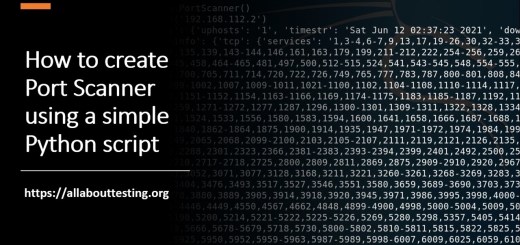Understanding Software Bill of Materials (SBOM) for Enhanced Cybersecurity

In an era dominated by digital technologies and software-driven solutions, the need for robust cybersecurity measures has never been more critical. One emerging concept gaining prominence in the realm of cybersecurity is the Software Bill of Materials (SBOM).
SBOM is a structured list that provides comprehensive details about the components and dependencies of a software application. This blog explores the significance of SBOM in enhancing cybersecurity and its growing importance in the software development lifecycle.
What is SBOM?
A Software Bill of Materials is analogous to the ingredients list on packaged food items. It offers a transparent breakdown of the various components and dependencies within a software application.
These components may include open-source libraries, third-party modules, and other software elements that contribute to the overall functionality of the application.
Key Components of SBOM
- Identification Information: This includes details such as the name, version, and description of the software.
- Dependencies: A list of other software components and libraries the application relies on.
- Version Information: The specific versions of each component, ensuring accurate tracking of software versions.
- License Information: Details about the licensing terms of each component, helping organizations ensure compliance with licensing agreements.
- Hash Values: Unique identifiers for each component, aiding in the verification of software integrity.
- Security Information: Vulnerability data and patches associated with each component, enabling proactive cybersecurity measures.
The Importance of SBOM in Cybersecurity
Vulnerability Management
SBOM facilitates the identification and tracking of known vulnerabilities within software components. By maintaining an up-to-date SBOM, organizations can quickly respond to security threats, apply patches, and mitigate potential risks.
Risk Assessment
Understanding the software supply chain is crucial for assessing and managing cybersecurity risks. SBOM provides a clear view of the components in use, allowing organizations to evaluate the security posture of their software and make informed decisions.
Regulatory Compliance
With the increasing focus on cybersecurity regulations, SBOM can assist organizations in meeting compliance requirements. Providing transparency into software components helps in demonstrating adherence to security standards and regulations.
Incident Response
In the event of a security incident, having a comprehensive SBOM can expedite the incident response process. It enables organizations to quickly identify and isolate affected components, reducing downtime and potential damage.
Supply Chain Security
SBOM enhances supply chain security by promoting transparency and accountability among software vendors. Organizations can make informed decisions about the software they integrate into their systems, ensuring the security of the entire supply chain.
Challenges and Future Considerations
While SBOM holds great promise for cybersecurity, challenges remain. Ensuring widespread adoption, standardization, and addressing privacy concerns are areas that need attention.
As the cybersecurity landscape evolves, continued efforts to refine and expand the SBOM concept will be crucial for its effective implementation.
Conclusion
In an age where cyber threats continue to evolve, the adoption of innovative cybersecurity measures is imperative.
The Software Bill of Materials emerges as a powerful tool, providing transparency, accountability, and enhanced security throughout the software development lifecycle.
As organizations embrace SBOM, they pave the way for a more resilient and secure digital future.
Subscribe us to receive more such articles updates in your email.
If you have any questions, feel free to ask in the comments section below. Nothing gives me greater joy than helping my readers!
Disclaimer: This tutorial is for educational purpose only. Individual is solely responsible for any illegal act.








